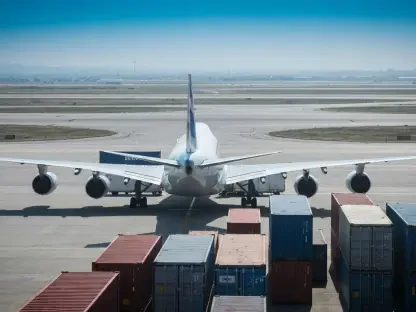Setting the Stage for a Shifting Market Landscape
In the complex arena of international trade, a seismic shift has reverberated through the logistics sector as U.S. Customs and Border Protection (CBP) recently authorized ten new providers, including heavyweights like Flexport, BoxC, and North American eCommerce Solutions, to manage postal duty tasks. This move comes on the heels of the elimination of the de minimis exemption, a policy that once allowed low-value shipments to bypass duties and taxes. With international mail carriers now grappling with tariffs and fees, the market stands at a critical juncture. This analysis dives deep into the implications of CBP’s decision, exploring how it reshapes compliance demands, alters competitive dynamics, and signals emerging trends in postal logistics. The stakes are high as stakeholders across the supply chain scramble to adapt to a new regulatory reality, making this a pivotal moment for global trade efficiency.
Unpacking Market Trends and Projections in Postal Logistics
Policy Shockwaves: De Minimis Elimination Redefines the Game
The scrapping of the de minimis exemption has sent shockwaves through the international postal market, fundamentally altering the cost structure for low-value shipments entering the U.S. Previously, this policy enabled streamlined imports by waiving duties on smaller parcels, a boon for e-commerce players. Now, with tariffs under the International Emergency Economic Powers Act (IEEPA) and fees ranging from $80 to $200, carriers face unprecedented financial pressures. This policy shift, driven by economic and security priorities, has exposed a significant readiness gap among operators, many of whom lack the infrastructure to handle complex duty calculations. Market data suggests a sharp initial decline in shipment volumes as carriers paused services to reassess strategies, highlighting the immediate disruptive impact on trade flow.
CBP’s Provider Expansion: A Market Stabilizer with Long-Term Potential
CBP’s authorization of ten additional providers to manage postal duties marks a strategic intervention aimed at stabilizing the market. By expanding the roster to include firms like Flexport alongside existing players such as Zonos and SafePackage, CBP has broadened access to specialized customs expertise. This move not only alleviates the compliance burden on carriers but also fosters a competitive environment among third-party providers, potentially driving down service costs over time. Projections indicate that by 2027, reliance on such providers could grow by 40%, as smaller operators seek scalable solutions to navigate regulatory hurdles. The market is witnessing a pivot toward outsourcing, positioning these authorized entities as critical cogs in the logistics ecosystem.
Diverse Operator Responses: Fragmentation and Innovation Collide
Across the global postal landscape, responses to the new regulations reveal a fragmented market with varying levels of adaptation. Larger operators, such as the U.K.’s Royal Mail, have rolled out Delivery Duty Paid (DDP) services, absorbing clearance costs through nominal fees and leveraging prior experience with EU-bound shipments. In contrast, smaller carriers have often resorted to suspending U.S.-bound deliveries, unable to shoulder the operational overhaul. Success stories, like Ukraine’s Ukrposhta clearing thousands of parcels through partnerships with providers, underscore the potential for innovation through collaboration. This divergence suggests a bifurcated market trajectory, where well-resourced players may gain share while others risk obsolescence unless they align with capable partners.
Technological Integration: The Next Frontier for Compliance
Looking beyond immediate reactions, technology emerges as a transformative force in the postal duty market. Automated duty calculation platforms and digital customs filing systems are gaining traction, offering carriers a path to streamline compliance without extensive internal investments. Industry forecasts predict that by 2026, adoption of such tools could rise significantly, fueled by partnerships between tech firms and authorized providers. This trend aligns with broader digitization efforts in logistics, where data-driven solutions enhance transparency and reduce processing delays. However, the upfront costs of tech integration pose barriers for smaller players, potentially widening the competitive gap unless affordable options emerge. The market is poised for a tech-driven evolution, reshaping how duties are managed at scale.
Economic and Consumer Impacts: Balancing Costs and Expectations
Another critical dimension of this market shift lies in its economic ripple effects, particularly on consumer behavior and carrier profitability. With added tariffs and handling fees, the cost of international shipments is climbing, which could dampen demand for cross-border e-commerce if passed on to buyers. Analysts project a potential 15% slowdown in low-value import growth over the next two years if cost sensitivities persist. Carriers, meanwhile, face squeezed margins as they absorb compliance expenses or risk losing customers to competitors with smoother processes. The interplay between pricing strategies and service reliability will be a defining factor, as operators must balance economic pressures with the need to maintain trust in a hyper-competitive market.
Reflecting on Market Insights and Strategic Pathways
Looking back, the analysis of CBP’s decision to empower Flexport and nine other providers to handle postal duties revealed a market in the midst of profound transformation. The elimination of the de minimis exemption had sparked immediate disruptions, yet it also catalyzed innovative responses from key players. Diverse strategies, from DDP services to tech adoption, had begun to redraw competitive boundaries, while economic pressures underscored the delicate balance carriers faced. Moving forward, stakeholders should prioritize forging partnerships with authorized providers to ensure compliance without sacrificing efficiency. Investing in scalable technology solutions offers a long-term safeguard against regulatory shifts, while exploring cost-sharing models with consumers could mitigate financial strain. As the market continues to evolve, staying agile and informed on policy developments remains essential for carving out a sustainable position in this dynamic landscape.









